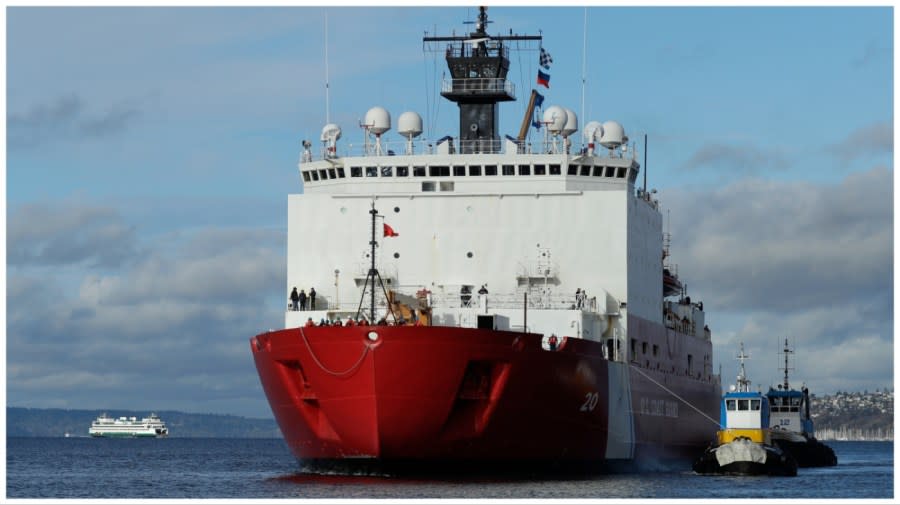Hearing shines spotlight on depleted US icebreaker fleet in the arctic

A Coast Guard leader and Republican senator on Wednesday spotlighted the depleted U.S. icebreaker fleet in the arctic, and warned of the consequences of falling further behind Russia and China in the area.
The U.S. has two national polar icebreakers — the heavy Polar Star, which was produced in 1976, and the medium Healy, which is focused on scientific operations and has to undergo annual repairs.
“We have two icebreakers, and one is broken,” said Sen. Dan Sullivan (R-Alaska), who appeared as a witness at the House Committee on Homeland Security hearing.
“That’s what we have. We are building more, we are looking to purchase of the shelve some, but we need to make sure that we are trying to close a very very significant icebreaker gap. Even China’s icebreaker capacity is on pace to surpass ours in 2025…and they are not even an Arctic nation.”
U.S. Coast Guard Vice Admiral Peter W. Gautier said the branch needs a fleet mix of eight to nine additional icebreakers in the next 10 years, to safeguard American interests in the northern region amid melting of polar ice caused by climate change and the increased Russian-Chinese cooperation.
“That’s a mix of heavy icebreakers, like the Polar Star and polar security cutters that we are building now and medium icebreakers like the Healy that have shallower drafts and can get into tighter spaces and shallower areas,” Gautier said.
Russia currently has at least three dozen national icebreakers, while China increased its count to four.
A $13.3 billion production program for new U.S. icebreakers — to handle strategic confrontations and environmental accidents — has run into challenges and delays ranging from technical difficulties to industrywide labor shortages. The procurement of the ships has now been pushed back to 2028.
Some lawmakers present at the hearing embraced Gautier’s push, while others questioned the price tag.
“You can look forward to great cooperative effort with my office and this Congress,” Rep. Clay Higgins (R-La.) said.
“We’ve talked about icebreakers and some of these things for years and years and it seems like we finally got that moving in the right direction,” said Rep. Tony Gonzales (R-Texas), who recently completed a congressional trip to Antarctica.
Rep. Josh Brecheen (R-Okla.) questioned whether the U.S. can afford the program, stating that the investment is a “significant” amount of money that could instead do “to secure our southern border.”
“I guess what I’m doing is help make a case with a nation that never talks about how we pay for this, how we pay for this and make the case for why is it such a high priority,” Brecheen said.
“The Coast Guard is actually an investment,” Gautier responded. “When we look at only costs, it sort of masks the fact that every day the Coast Guard actually saves the nation money.”
The vice admiral added that the Coast Guard has been requesting polar funding for over 20 years and that those requests have been deferred for quite a while.
“When we look at the geostrategic impacts of additional presence by Russia, additional presence by China, what costs are we deferring that we are going to pay in the long term,” Gautier said.
Brecheen asked what would happen in the unlikely event that climate trends reverse and more of the arctic freezes over.
“What happens if the freeze re-initiates there,” Brecheen asked. “We had this investment and now things go the opposite direction.”
Gautier argued that regardless of the conditions near the Arctic region, the Coast Guard will need machinery that is capable of ice-breaking.
“Wherever there’s ice, we’re going to need an ice-breaking capability to give it access to the places that we need to go to provide Coast Guard services,” Gautier said.
“And thinking about your last question, our one heavy icebreaker was built in 1976. I think that’s pretty darn good value for the buck.”
For the latest news, weather, sports, and streaming video, head to The Hill.

